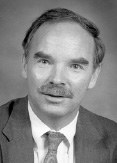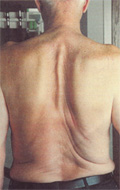|
PT Classroom - Spine Sign and Physical Therapy ׀ by Michael H. Zeihen, MD |

Dr. Michael H. Zeihen received his medical degree from Medical College of Wisconsin and completed his residency at Yale University School of Medicine at Greenwich, Connecticut. He is an Internal Medicine physician and is currently practicing at United Hospital System. |
| A Case Study- Spine Sign & Physical Therapy |

Participation in physical therapy is a crucial part of
the equation when trying to obtain the optimal level of
success for my patients. In this case I was presented with a
64 y/o male patient who displayed atrophy of the
paravertebral musculature and displayed a “spine sign”. The
patient had undergone a coronary artery bypass graft (CABG)
and had been experiencing severe post-CABG anterior chest
pain. Patient also has a history of seminoma (testicular
cancer) and had been treated for this condition 30 years
ago. The treatment had involved the anterior and posterior
fields of the retroperitoneum (abdominal cavity) and
mediastinum (region in thorax). |
|
Last revised: February 11, 2008
|
| References |
| 1. Om A, Ellahham S, Vetrovec GW. Radiation-induced coronary artery disease. AM Heart J. 1992;124:1598-1602. |
| 2. Steward JR, Fajardo LF, Gillette SM, Consine LS. Radiation injury to the heart. Int J Radiant Oncol Biol Phys. 1995;31:1205-1211. |
|
|
|
|







